Genus Pinus Scientific name Pinus halepensis Rank Species | Division Pinophyta Subgenus Pinus Higher classification Pine | |
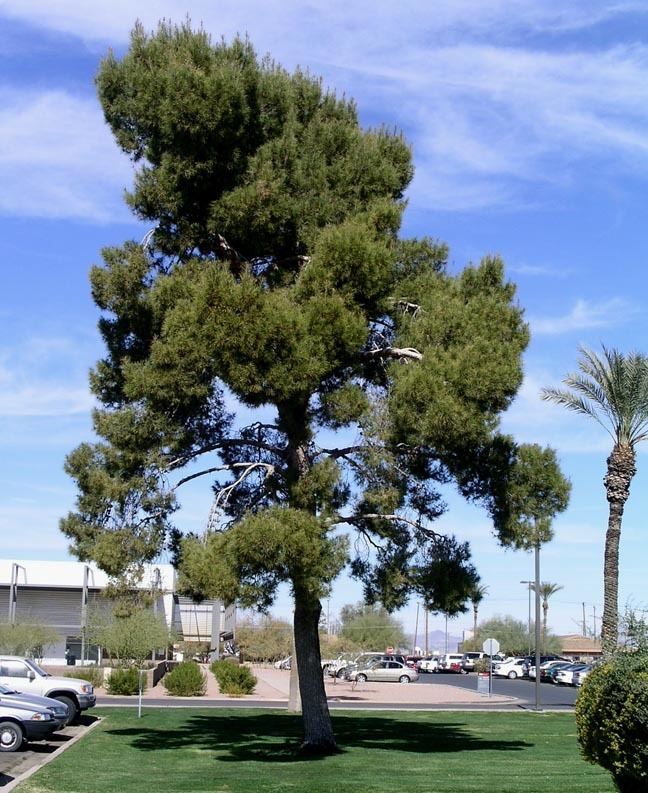 | ||
Similar Pine, Stone pine, Pinus pinaster, Quercus ilex, Pinus nigra | ||
Aleppo pine fun pinus halepensis
Pinus halepensis, commonly known as the Aleppo pine, is a pine native to the Mediterranean region. Its range extends from Morocco, Algeria and Spain north to southern France, Italy, Croatia, Montenegro, Albania, and east to Greece, all over Malta and northern Tunisia, with an outlying population (from which it was first described) in Syria, Lebanon, southern Turkey, Jordan, Israel, and Palestinian territories. In Israel it is called Jerusalem pine.
Contents
- Aleppo pine fun pinus halepensis
- Demo teunis jan klein op een pinus halepensis yamadori
- Distribution
- Description
- Related species
- Uses
- Forestry
- Landscape
- References

Demo teunis jan klein op een pinus halepensis yamadori
Distribution
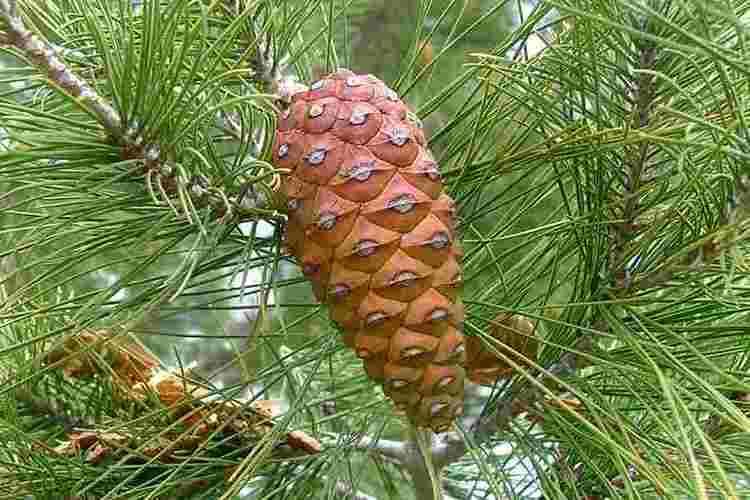
Pinus halepensis, the Aleppo pine, is generally found at low altitudes, mostly from sea level to 200 m (660 ft), but can grow up to 1,000 m (3,300 ft) in southern Spain, well over 1,200 m (3,900 ft) on Crete, and up to 1,700 m (5,600 ft) in the south, in Morocco, Algeria and Tunisia. The tree is able to quickly colonize open and disturbed areas. It can grow on all substrates and almost in all bioclimates in the Mediterranean.
Description
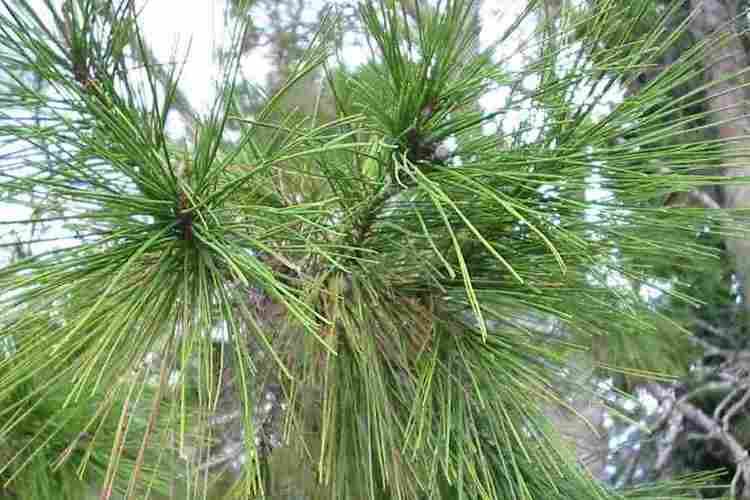
P. halepensis is a small to medium-sized tree, 15–25 m (49–82 ft) tall, with a trunk diameter up to 60 cm (24 in), exceptionally up to 1 m (3 ft 3 in). The bark is orange-red, thick, and deeply fissured at the base of the trunk, and thin and flaky in the upper crown. The leaves ("needles") are very slender, 6–12 cm (2.4–4.7 in) long, distinctly yellowish green, and produced in pairs (rarely a few in threes). The cones are narrow conic, 5–12 cm (2.0–4.7 in) long and 2–3 cm (0.79–1.18 in) broad at the base when closed, green at first, ripening glossy red-brown when 24 months old. They open slowly over the next few years, a process quickened if they are exposed to heat such as in forest fires. The cones open 5–8 cm (2.0–3.1 in) wide to allow the seeds to disperse. The seeds are 5–6 mm (0.20–0.24 in) long, with a 20-mm wing, and are wind-dispersed.
Related species
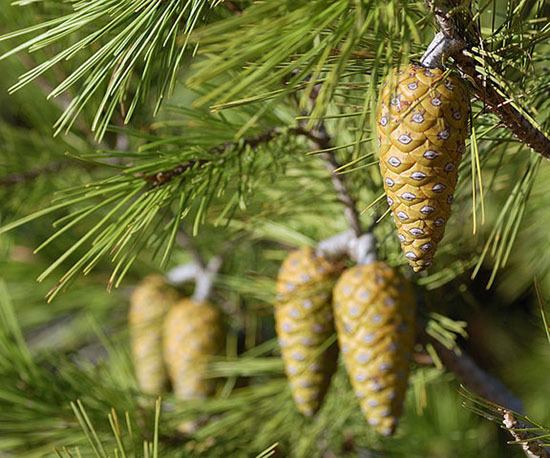
The Aleppo pine is closely related to the Turkish pine, Canary Island pine, and maritime pine, which all share many of its characteristics. Some authors include the Turkish pine as a subspecies of the Aleppo pine, as Pinus halepensis subsp. brutia (Ten.) Holmboe, but it is usually regarded as a distinct species. It is a relatively nonvariable species, in that its morphological characteristics stay constant over the entire range.
Uses
The resin of the Aleppo pine is used to flavor the Greek wine retsina.

From the pine nuts of the Aleppo pine is made a pudding called asidet zgougou in the Tunisian dialect; it is served in bowls, covered with cream, and topped with almonds and small candies.
Aleppo pine are used for bonsai.
Forestry
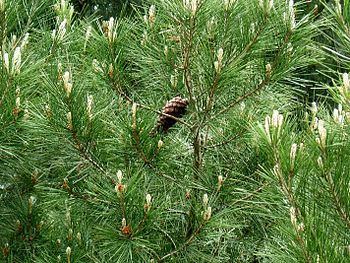
In its native area, P. halepensis is widely planted for its fine timber, making it one of the most important forestry trees in Algeria and Morocco. In Israel, the Aleppo pine, along with Pinus brutia, has been planted extensively by the JNF. It proved very successful in Yatir Forest in the northern Negev (on the edge of the desert), where foresters had not expected it to survive. Many Aleppo pine forests exist today in Israel and are used for recreational purposes. Although it is a local species, some argue that the historical replacement of natural oak Maquis shrubland and garrigue with tall stands of pine has created "ecological deserts" and has significantly changed the species assemblage of these regions. In Israel natural patches of Aleppo pine forests can be found in the Carmel and Galilee regions. The species produces timber which is valued for its hardness, density and unproblematic seasoning. Seasoned timber is inclined to tear out with planing, but this can be avoided by using sharp blades or adjusting the sharpening angle of tools.
The Aleppo pine is considered an invasive species though useful in South Africa; in South Australia, a control program is in place on Eyre Peninsula.
Landscape
P. halepensis is a popular ornamental tree, extensively planted in gardens, parks, and private and agency landscapes in hot dry areas such as Southern California and the Karoo in South Africa, where the Aleppo pine's considerable heat and drought tolerance, fast growth, and aesthetic qualities, are highly valued.
